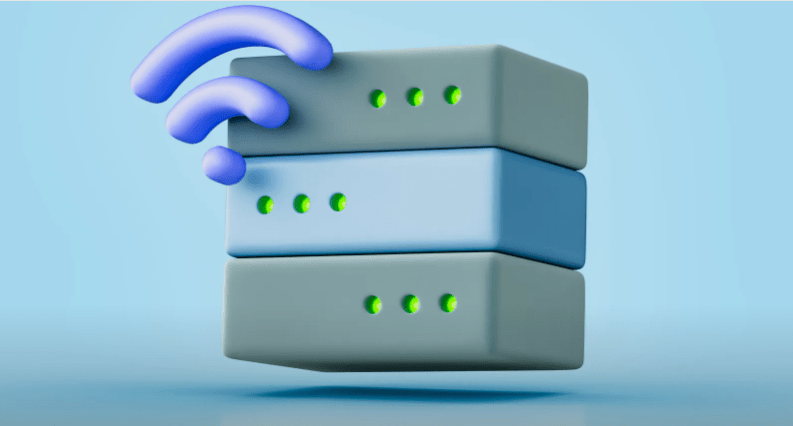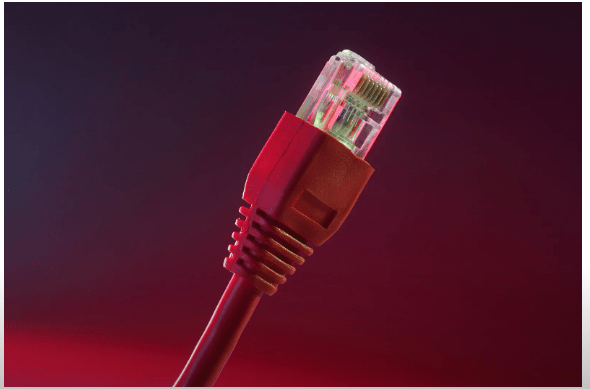Enhance Your Home Internet Connection with Wi-Fi Extenders and Wall Brackets

In today’s world, fast and reliable internet is crucial for everything from work to entertainment. Whether you’re a remote worker, a streaming enthusiast, or just someone who wants to browse the web without frustration, there’s no denying the importance of a strong Wi-Fi connection.
Despite having the best possible wires outside your house, slow speeds and dead zones can still plague your Wi-Fi inside and outside your home. Luckily, there are steps you can take to troubleshoot and improve your internet connection.
First, start by identifying the source of the problem. Slow internet speeds can be caused by a variety of factors, including interference from other devices or outdated hardware. Try moving your router to a central location and away from walls, metal objects, or other sources of interference.
If dead zones are the issue, consider investing in a Wi-Fi extender or mesh network system. These devices work by amplifying and distributing your Wi-Fi signal throughout your home, ensuring a strong connection in every corner.
Another way to boost your Wi-Fi speed is by upgrading your router. If you’re using an older model or one provided by your ISP, it may be time for an upgrade. Newer routers offer faster speeds, better coverage, and stronger security features.
In addition to these hardware solutions, there are also software options to improve your Wi-Fi. Apps like NetSpot or Wi-Fi Analyzer can help you analyze your network and identify areas in need of improvement. You can also try changing your Wi-Fi channel or DNS settings to optimize performance.
Ultimately, getting faster and more reliable Wi-Fi in your home is within your control. By troubleshooting and trying out different solutions, you can enjoy seamless internet access no matter where you are in your house.”
1. Move Your Router
That router in the closet? Not a good idea. Walls, cupboards, even bookshelves can potentially dampen your Wi-Fi signal. Physically moving the router can make a real difference to the speeds you get and how far its wireless transmissions can reach. The perfect spot will depend on your home, but try not to hide your router in a corner or under a cupboard or inside a drawer—the more central and prominent it is, the better. For more info, read our guide to where to put your router for the best possible home Wi-Fi.
You might need to apply some creative cabling to get your router in a better place, but it’s going to be worth the effort. The goal is to get your main devices—consoles, laptops, and so on—as close as possible to your router. Devices that don’t need quite so much bandwidth, like smart thermostats, don’t have to be a priority in terms of physical proximity.
For this reason it’s worth considering the look of your router when purchasing. If you buy a router you consider hideous, you’re much more likely to put it in a closet. Figure out the best spot given the location of your high-priority devices, then consider what’s going to look good to you in that spot.
If you don’t have a flat surface near the best spot, you can mount your router halfway up a wall. If possible, keep it away from other devices that use electromagnetic waves; that includes baby monitors, wireless keyboards, and microwaves.
2. Use an Ethernet Cable

We sometimes forget: Wires still exist! Actually we don’t, it’s in our name, but it needs to be said: you don’t need Wi-Fi. A wired connection to your router is faster and more stable that Wi-Fi, and it can’t be affected by other devices or large fish tanks. The downside is that it limits where your devices can be, and it’s less convenient.
3. Change the Channel or Band
Wi-Fi signal is divided into channels. Your router uses a particular Wi-Fi channel to communicate with the devices around your home. If you have close neighbors who have routers using the same Wi-Fi channel, then everything can get congested quickly. Switching channels can solve this problem.
Every router will handle this differently. Check its documentation or look up the instructions online if you’re not sure, but you should be able to find the option somewhere in the device settings. Channels 1, 6, and 11 are the ones to try, as they’ll have the least interference when multiple devices get hooked up.
Most routers now use dual-band technology, broadcasting at the 2.4-GHz and 5-GHz frequencies. If your router settings allow you, you might be able to prioritize one or the other for certain devices—the 5-GHz band will get you a faster connection to the internet, though it has a shorter range than 2.4 GHz. We suggest leaving both frequencies enabled since older devices will often work only on 2.4 GHz.
4. Upgrade Your Router

Routers vary significantly in functionality and price. If you have dead or slow zones in your house, you probably need to change where and how far your Wi-Fi is broadcast. If you have a large home, you’re likely better off with a router that can pair with “repeaters” that broadcast signals into the farthest reaches of your space. Smaller homes and apartments can generally get by with a simpler system. Read our router buying guide for more details.
5. Get a Wi-Fi Extender
If messing around with your router settings seems too daunting, and you have a few dollars to spare, invest in a Wi-Fi extender or repeater. These devices plug into a spare wall socket, connect to the wireless internet getting beamed out by your router, and extend it.
They’re (usually) simple to set up, easy to use, and can instantly get rid of Wi-Fi dead zones in your house. The extended or repeated wireless signals won’t be as strong as the ones coming straight from your router, so, again, positioning is important. Try to use these devices to connect gadgets that don’t need a huge amount of bandwidth.
You’ve got plenty of options: Take a look at the Linksys AC1900 ($80, Amazon) or the Netgear EX7300 ($100, Amazon). Make sure the maximum supported Wi-Fi standard (e.g., 802.11ac) matches that of your router so you get as speedy a connection as possible.
6. Use Your Electrical Wiring

An alternative to extenders is a powerline kit. Digital signals can pass through electrical wiring, and powerline devices are designed to take advantage of this. Several manufacturers make powerline networking kits, including Netgear ($100, Amazon) and TP-Link ($50, Amazon).
It works like this: You connect a powerline plug to your router, then put the plug into a wall socket. Add another powerline plug in any other room in your house, and it can provide a wired or wireless connection to that room. There will be some drop in speed, but it’s a simple and effective option. Unless your home is particularly old, it should have electrical wiring that supports this, but it’s best to buy your kit from a retailer with a robust return policy just in case.
7. Add a Password to Your Wi-Fi
We probably don’t have to tell you this, but you need a password on your Wi-Fi network. It’s good for keeping hackers away and keeping neighbors from Netflixing off of your bandwidth, which will definitely slow you down. Make sure you use AES encryption, which is both the most secure and most speed-friendly security option.
8. Cut Off Unused Devices
Having dozens of things tapping into the Wi-Fi at once can be problematic. Plug anything you can into Ethernet, and unplug anything you have connected but don’t need (like that “smart” tea kettle you never once got to work). Make sure only the things that need internet get internet.
Good routers (all of the routers listed above, for example) offer controls to prioritize a particular device or service. It’s a handy way to make sure your games never get interrupted by someone else streaming videos on Facebook.
9. Check Your PC
This tip is specific to computers: If the internet on your PC or laptop is perpetually slow but other devices seem fine, open your Task Manager or Activity Monitor and see which programs are running in the background. Certain programs could be set to auto-update that don’t need to be. If they’re always updating in the background, that could be the cause of your slow internet. Check it out and adjust the settings.
10. Restart Your Router?
We’ve read this tip many times on the web, but we were skeptical. Restarting your router on a regular basis sounds like an extension of the age-old pseudo solution to everything digital: Reboot it. Yes, we know restarting your router can sometimes fix dead internet, but we asked router maker Netgear: Does regularly rebooting your router help speed things up? The short answer is, probably not.
Sandeep Harpalani, vice president of product management at Netgear, says the company does not recommend rebooting its routers “unless you actually encounter issues with connectivity or slowdowns due to radio frequency interference.” He adds that if you’re still using 2.4-GHz Wi-Fi and you’re having speed troubles, rebooting might help, since it will force the router to choose the best channel with the least interference during boot-up. If you’ve made the jump to 5 GHz, it will automatically switch to the channel with the least amount of interference.
Either way, there’s no reason to reboot regularly. If you are having persistent problems, then it may be worth restarting your router, but for the most part stick with our other tips.
11. Call Your ISP
If you’ve tried it all and still have problems, you can always contact your internet provider. They may want to send a service technician out. They might be able to pinpoint an overlooked issue that is getting in the way of you and fast Wi-Fi. With the ongoing pandemic, you may not want strangers in your house, and your ISP may not have technicians available to send. Still, if none of the rest of these tips solve your problem, it’s time to reach out to your provider to ask some questions.